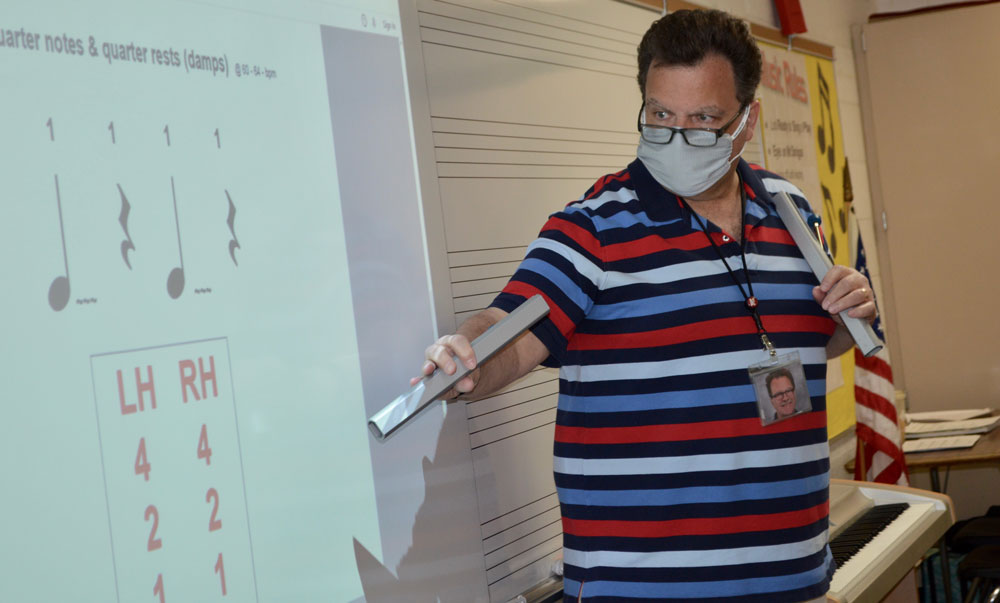Northview — A group of third-graders filed into Lou Sinigos’ music room recently and waited at their designated floor markers. As each row was called, they rose and took a handchime in each hand and returned to their places. There was no time for chit-chat; it was time to make music.
First lesson: “No knocking of noggins,” Sinigos told students with a laugh. In other words, keep the instruments close to the body when walking around “or you might clunk someone or yourself.”
Over the class period third-graders worked their way up and down the linear music scale — C, D, E, F and so on — in whole, half and quarter notes. After they ran through without stopping, Sinigos asked what was most impressive about the joyful noise they’d just made.
“That we stayed on the beat the whole way through,” said Cameron McCullough.
“Yes, you kept right with the metronome,” agreed their teacher. “That’s hard. You guys can do this.”
Grant-funded Learning
This year, some 500 students in grades DK to 4 at East and West Oakview schools are taking part in a six-session handchime unit. Grants starting in 2007 from the Northview Education Foundation and the Arts Council of Greater Grand Rapids paid for four, 25-note chromatic sets.
Handchimes were designed to be a teaching tool for handbells, those bell-shaped, bright-toned instruments with an internal clapper. The tubular chimes, on the other hand, have a more mellow tone and an external clapper. Handchimes are designed to be lighter, less expensive, more durable and simpler to play.
Sinigos said an essential aspect of music education is preparing students to read music, and that handchimes are a fun, effective way to teach music literacy such as tone, harmony and rhythm. The act of ringing engages fine and gross motor skill coordination, most notably the alternating use of hands.
The benefits are cross-curricular, he said, and also hone soft skills such as confidence, teamwork, increased attention span and self-monitoring.
Beat Goes On
Though they won’t be performing in person at the end of this unit as in past years, Sinigos said handchimes provide a rare opportunity for elementary music-making due to safety restrictions during the pandemic, as signing and playing recorders produce too much aerosol to practice in small spaces.
“The students love chiming,” he said. “This year, little things like this that we can do help tremendously.”
Ja’Zariah Stelton said she’s making progress since she first played handchimes at school in first grade. The best thing about them: “You can have fun, but also you’re learning,” she said.
Cameron didn’t have to think long when asked what was most challenging: to remember that playing the handchimes, and unintended notes, are all in the arm gestures.
“Every single time your hands might go up or down,” he explained, “they ring.”















